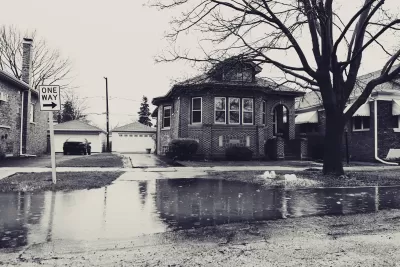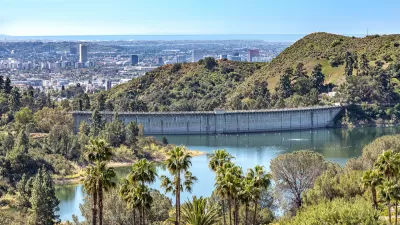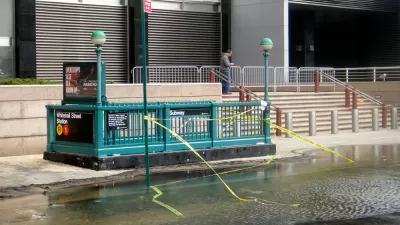The city’s geography and the growing intensity of storms due to climate change are making it difficult for local officials to prevent neighborhood flooding and wastewater spills.

In an article for the Chicago Tribune and republished in Governing, Michael Hawthorne and Adriana Pérez describe how Chicago’s efforts to mitigate higher flood risks are not keeping up with the effects of climate change.
The Deep Tunnel, a $3.8 billion subterranean flood control project officially known as the Tunnel and Reservoir Plan (TARP), is designed to prevent flooding and keep wastewater and industrial runoff out of local waterways. But earlier this month, during a heavy storm, 20 overflow pipes in Cook County spewed runoff and waste. “Recent storms suggest rain can now fall so quickly that stormwater tunnels can’t move runoff to the reservoir fast enough to prevent sewage overflows and basement backups in the 252 square miles of Chicago and County served by the main part of the system.”
The prognosis is grim: “In 2010, [Don] Wuebbles and other scientists hired by former Mayor Richard M. Daley concluded that rains of more than 2.5 inches a day, the amount that can trigger sewage dumping into Lake Michigan, were expected to increase by 50 percent by 2039.”
As the authors point out, “Like so many other societal ills, the consequences hit the poorest Chicagoans the hardest. After a major storm in 2013, city officials determined the damages were concentrated in low- and middle-income census tracts on the West and South sides, similar to where many 311 calls originated after the more recent storms.”
The Water Reclamation District is partnering with local governments to build more retention basins, particularly in areas where flooding has occurred repeatedly.
FULL STORY: Chicago’s Flood-Control Project Can’t Contend With Climate Change

Alabama: Trump Terminates Settlements for Black Communities Harmed By Raw Sewage
Trump deemed the landmark civil rights agreement “illegal DEI and environmental justice policy.”

Planetizen Federal Action Tracker
A weekly monitor of how Trump’s orders and actions are impacting planners and planning in America.

Why Should We Subsidize Public Transportation?
Many public transit agencies face financial stress due to rising costs, declining fare revenue, and declining subsidies. Transit advocates must provide a strong business case for increasing public transit funding.

Understanding Road Diets
An explainer from Momentum highlights the advantages of reducing vehicle lanes in favor of more bike, transit, and pedestrian infrastructure.

New California Law Regulates Warehouse Pollution
A new law tightens building and emissions regulations for large distribution warehouses to mitigate air pollution and traffic in surrounding communities.

Phoenix Announces Opening Date for Light Rail Extension
The South Central extension will connect South Phoenix to downtown and other major hubs starting on June 7.
Urban Design for Planners 1: Software Tools
This six-course series explores essential urban design concepts using open source software and equips planners with the tools they need to participate fully in the urban design process.
Planning for Universal Design
Learn the tools for implementing Universal Design in planning regulations.
Caltrans
Smith Gee Studio
Institute for Housing and Urban Development Studies (IHS)
City of Grandview
Harvard GSD Executive Education
Toledo-Lucas County Plan Commissions
Salt Lake City
NYU Wagner Graduate School of Public Service




























